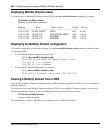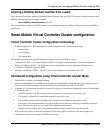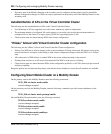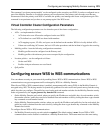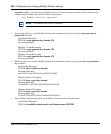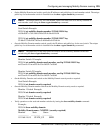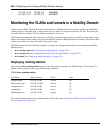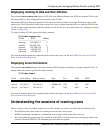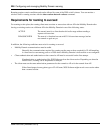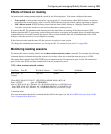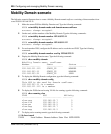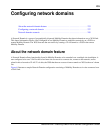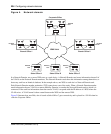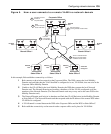
228 Configuring and managing Mobility Domain roaming
NN47250-500 (Version 03.01)
Roaming requires certain conditions and can be affected by some of the WSS switch’s timers. You can monitor a
wireless client’s roaming sessions with the show sessions network verbose command.
Requirements for roaming to succeed
For roaming to take place, the roaming client must associate or reassociate with an AP in the Mobility Domain after
leaving an existing session on a different AP in the Mobility Domain in one of the following states:
In addition, the following conditions must exist for roaming to succeed:
• Mobility Domain communications must be stable.
Generally, the communications required for roaming are the same as those required for VLAN tunneling.
A client can also roam among ports on a WSS when a Mobility Domain is inaccessible or not configured.
• Client authentication and authorization on the roamed-to AP must be successful on the first attempt.
If authentication or authorization fails, WSS Software clears the client session. Depending on when the
failure occurs, roaming can be disqualified or delayed.
• The client must use the same authorization parameters for the roamed-to AP as for the roamed-from AP.
If the client changes its encryption type or VLAN name, WSS Software might record a new session rather
than a roamed session.
ACTIVE The normal state for a client that has left radio range without sending a
request to disassociate.
DEASSOCIATED The state of a client that has sent an 802.11 disassociate message, but has
not roamed or aged out yet.



